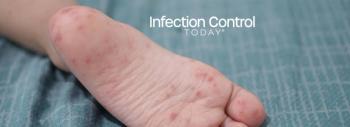
Substance Use Common Among Patients With TB
About one in five U.S. tuberculosis patients reports abusing alcohol or using illicit drugs, and those who do appear more contagious and difficult to treat, according to a report in the January 26 issue of Archives of Internal Medicine.
The annual rate of new tuberculosis (TB) cases in the United States is among the lowest in the world, according to background information in the article. However, certain groups remain at higher risk. “The epidemiology of TB in the United States has been best summarized by Iseman: ‘As the epidemic tide of tuberculosis recedes from the shores of America, small tidepools of disease remain behind: pools populated by immigrants, the elderly and the immunocompromised’,” the authors write. “A less frequently discussed tidepool that complicates U.S. TB control efforts is the illicit drug–using and alcohol-abusing population.”
John E. Oeltmann, PhD, of the Centers for Disease Control and Prevention (CDC), and colleagues analyzed data from 153,268 patients 15 years or older who were reported to have TB between 1997 and 2006. Of these, 28,650 (18.7 percent) reported substance abuse—a larger percentage than those who reported any other established risk factors for TB, including recent immigration to the United States (12.9 percent), infection with HIV (9.5 percent), living in a group setting (6.6 percent), homelessness (6.3 percent) or working in a high-risk occupation (4.3 percent).
“Our results suggest that substance abuse is the most commonly reported modifiable behavior impeding TB elimination efforts in the United States,” the authors write. Among patients who were negative for HIV, those who reported substance abuse were 1.8 times more likely to have a more contagious form of TB (as indicated by a positive sputum smear). Females who were substance abusers were 2.4 times more likely to experience treatment failure than were other females.
“The relation between substance abuse and increased transmission of Mycobacterium tuberculosis can be explained in several ways, some of which are indirect and revolve around delayed diagnosis and difficulties identifying at-risk contacts, screening them for TB and treating patients with positive findings,” the authors write. “Persons who abuse substances may have less access to routine medical care, potentially leading to delayed diagnoses. As the disease progresses, patients tend to become more contagious.”
Patients who abuse substances are less likely to be screened for TB or to begin and complete treatment for latent infection or active disease, the authors note—problems compounded by the compromised immune systems of individuals who abuse alcohol, crack cocaine, heroin, marijuana and methamphetamines. In addition, antituberculosis medications are usually metabolized by the liver, which is often damaged by substance abuse.
“Tuberculosis control and substance abuse programs need to work together to simultaneously treat the diseases of addiction and TB,” the authors conclude.
Reference: Arch Intern Med. 2009;169[2]:189-197.
Newsletter
Stay prepared and protected with Infection Control Today's newsletter, delivering essential updates, best practices, and expert insights for infection preventionists.






